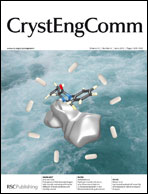A 3D organic–inorganic network constructed from an Anderson-type polyoxometalate anion, a copper complex and a tetrameric [Na4(H2O)14]4+cluster†,‡
Abstract
A rare three-dimensional organic–inorganic compound based on the Anderson-type polyoxometalate anion, [Na4(H2O)14Cu(PDA)2]H[Al(OH)6Mo6O18]·5H2O (H2PDA =
![Graphical abstract: A 3D organic–inorganic network constructed from an Anderson-type polyoxometalate anion, a copper complex and a tetrameric [Na4(H2O)14]4+ cluster,](/en/Image/Get?imageInfo.ImageType=GA&imageInfo.ImageIdentifier.ManuscriptID=B924394A&imageInfo.ImageIdentifier.Year=2010)

 Please wait while we load your content...
Please wait while we load your content...